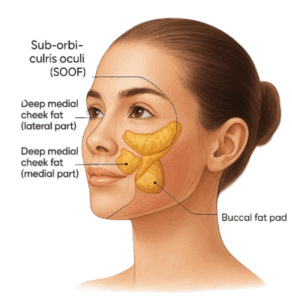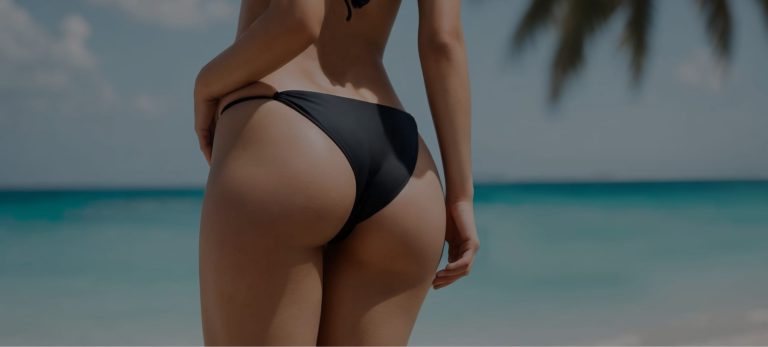In recent years, buccal fat removal has emerged as one of the most buzzed-about procedures in the world of facial contouring. With influencers, celebrities, and even TikTok creators showcasing slimmer cheeks and more sculpted jawlines, it’s no wonder that interest in this subtle yet transformative surgery has skyrocketed.
But what exactly is buccal fat removal, and is it right for you? In this guide, we’ll break down everything you need to know—from the benefits and potential risks to how the procedure works and what to expect from your results.
What Is Buccal Fat Removal?
Buccal fat removal is a cosmetic surgery designed to reduce the appearance of fullness in the lower cheeks by removing a pad of fat known as the buccal fat pad. This fat sits deep within the cheek, between the facial muscles, and contributes to a naturally round or soft facial shape.
By carefully removing a portion of this fat, your surgeon can help define the contours of your face—especially around the cheekbones and jawline—resulting in a more sculpted, refined look. The procedure is typically performed through small incisions inside the mouth, leaving no visible scars.

Why Has Buccal Fat Removal Become So Popular?
The increasing interest in buccal fat removal can be attributed to a few key trends:
- Sleek, contoured facial features have become a modern beauty ideal, with many patients seeking a more defined appearance that still looks natural.
- Social media exposure has put more emphasis on symmetry and definition, with front-facing video making cheek and jawline shape more noticeable.
- Minimally invasive options are in demand. While buccal fat removal is a surgical procedure, it’s performed under local anesthesia and involves no external incisions.
Who’s a Good Candidate?
While buccal fat removal is suitable for many patients, it’s not ideal for everyone. The best candidates are typically:
- In their 20s to 40s
- At or near their goal weight
- Experiencing excess fullness in the lower cheeks
- Seeking more definition in the midface and jawline
- In good overall health and non-smokers
It’s important to note that patients with very thin faces may not benefit from this procedure and could risk a hollow or gaunt appearance over time—especially as natural volume continues to decrease with age.
The Procedure: What to Expect
Buccal fat removal is a relatively quick outpatient procedure, typically taking about 30–60 minutes.
Step-by-Step Overview:
- Anesthesia: Local anesthesia with or without sedation is commonly used.
- Incision: A small incision is made inside each cheek, between the gums and inner cheek lining.
- Fat Removal: Your surgeon gently locates the buccal fat pad and removes a controlled amount to sculpt the area.
- Closure: The incision is closed with dissolvable sutures.
Since the incisions are inside the mouth, there are no visible scars. Most patients go home the same day and resume light activities within a few days.
Recovery and Downtime
While buccal fat removal is considered low-risk, it’s still surgery—and proper recovery is essential for optimal results.
Here’s a general recovery timeline:
- Days 1–3: Swelling and mild discomfort are expected. You’ll likely be on a soft or liquid diet to avoid irritating the incision site.
- Week 1: Bruising and swelling start to subside. Many patients feel well enough to return to work or social activities.
- Weeks 2–4: Visible swelling decreases significantly, but subtle puffiness may persist.
- Weeks 6–12: Your final results begin to take shape as residual swelling fades.
Full results may take a few months to appear, especially since facial tissue takes time to settle into its new contours.
Pros of Buccal Fat Removal
When performed on the right candidate, this procedure can offer several aesthetic benefits:
- Enhanced Facial Definition: creates sharper contrast between the cheeks and jawline for a more structured look.
- Subtle, Natural Results: the change is noticeable but not extreme—ideal for patients seeking refinement without obvious signs of surgery.
- Scarless Approach: with all incisions made inside the mouth, there are no external scars.
- Short Recovery Time: most patients resume normal routines within a week, with minimal downtime compared to other facial surgeries.
Potential Drawbacks to Consider
While buccal fat removal offers many advantages, it’s not without its limitations or risks.
- Overcorrection Risk: removing too much fat can result in a hollow or aged appearance over time, especially in leaner patients.
- Aging Considerations: because we naturally lose facial volume with age, aggressive fat removal in your 20s or 30s could contribute to premature volume loss later on.
- Irreversible Results: unlike injectable treatments, this procedure is permanent. It’s important to be confident in your goals and choose a surgeon who understands facial harmony.
- Not a Weight Loss Procedure: this surgery is not designed to reduce overall facial fat or address double chins. It’s best for patients with localized cheek fullness.
What About Combining It With Other Procedures?
Buccal fat removal is often performed in combination with other facial treatments to enhance results. These may include:
- Chin augmentation: Enhances projection and structure along the lower face.
- Jawline contouring: May involve fillers or implants to define the mandibular angle.
- Facial liposuction: Helps reduce volume in the lower face or under the chin.
- Facial rejuvenation procedures: Such as brow lifts, eyelid surgery, or facials for overall refinement.
Your surgeon can recommend a tailored approach based on your goals and anatomy.
Is Buccal Fat Removal Right for You?
The decision to undergo any cosmetic procedure should be informed, realistic, and personalized. Buccal fat removal is not a one-size-fits-all solution—but when done correctly on the right patient, it can provide long-lasting, natural-looking facial refinement.
If you’re considering this procedure, schedule a consultation with a board-certified plastic surgeon who can evaluate your facial anatomy, discuss your goals, and guide you toward the best approach for you.
Buccal fat removal continues to rise in popularity for good reason—it offers a sleek, sculpted look with minimal downtime and no external scars. But like all cosmetic procedures, it requires careful consideration, expert technique, and realistic expectations.
At the South Florida Center for Cosmetic Surgery, we specialize in creating balanced, natural results tailored to each patient. If you’re ready to explore your options and learn more about facial contouring, our team is here to help you make the most informed and confident decision possible.




